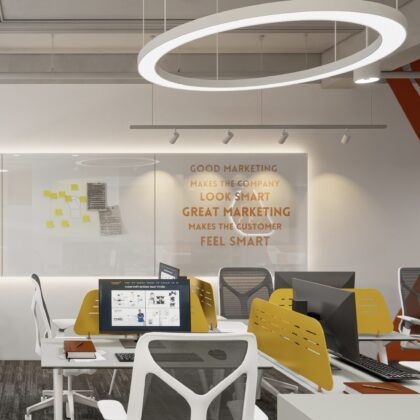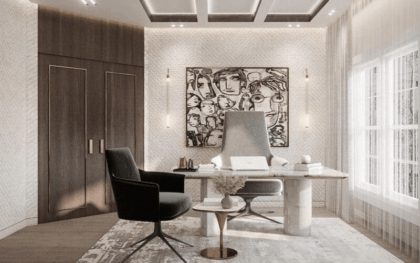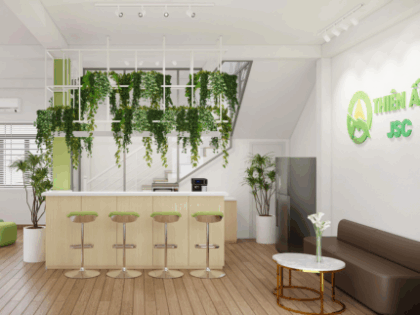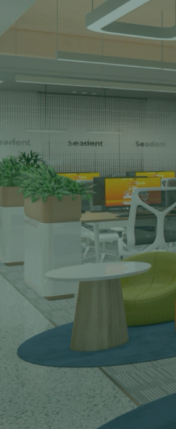A smart and modern office cannot be complete without a lighting system. Still struggling to choose the right lighting design for your office? The article below from Timi Office will bring you the most stylish and modern lighting design for office inspirations.
>>>> LEARN NOW: 101+ beautiful, modern office design samples
Mục lục bài viết
- 1. The Role of Lighting in the Workplace Office
- 2. Standards for Evaluating Office Lighting Design
- 3. Standards Required for an Effective Office Workspace
- 4. Criteria for calculating the correct office lighting
- The color temperature of neutral light ranges from 4000 to 4500K.
- 6. General Calculation Formula for Office Lighting
1. The Role of Lighting in the Workplace Office
Lighting plays a crucial role in illuminating your office space. It directly affects the health of employees as well as their work efficiency and quality. According to research by scientists, lighting not only impacts human vision but also influences emotions and moods, depending on the level of comfort and satisfaction of individuals.

Therefore, using lighting design for the office appropriately brings very high effectiveness. Moreover, lighting also has the ability to kill mold, harmful diseases, and make the space more ventilated, contributing to better health for individuals.
On the other hand, the two main factors that contribute to the beauty of an office interior design are lighting and color. Therefore, to create a beautiful and aesthetically valuable working space, you need to enhance the use of lighting in a harmonious way. Natural light should be prioritized, but in addition, businesses can use artificial lighting from various types of lamps: LED lights, fluorescent lights, colored lights, etc.
>>>> SEE NOW: Professional full-package office interior design and construction
2. Standards for Evaluating Office Lighting Design
When designing lighting for the office, you need to remember the following factors along with their corresponding specifications.
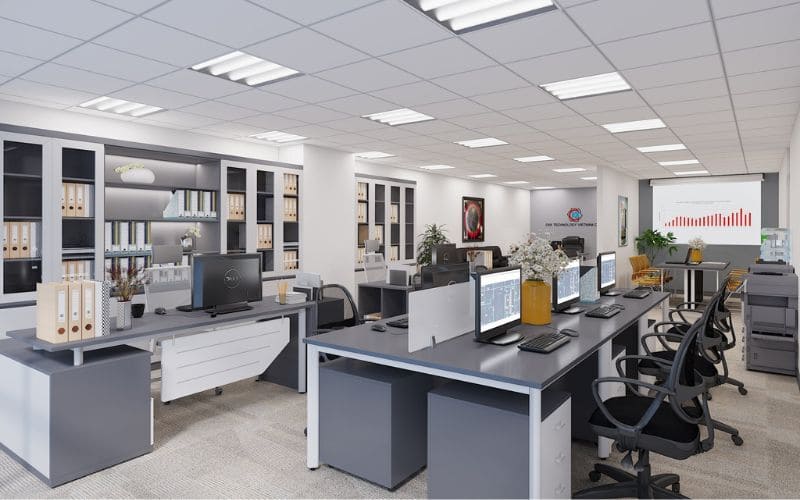
- Illuminance
This is the luminous flux per unit area of the illuminated surface, also known as the unit representing brightness at a specific point. The unit of illuminance is lux, abbreviated as lx. 1 lux = 1 lumen/m².
This is the most important factor to consider in the lighting design standards for your workspace. Therefore, to achieve the best lighting system for the office, the illuminance standard must be met first.
In some office areas, the standard illuminance values are as follows: Lobby, waiting room: 200 lux; Corridor, staircase: 100 lux; Escalator: 150 lux; Office: 400 lux.
- Color Rendering Index (CRI)
This is the quantity that reflects the accuracy of the color of an object being illuminated. The Color Rendering Index (CRI) is abbreviated as CRI and is measured in Ra. A CRI range of 80-100 Ra is considered to meet the standard for color rendering.
A low Color Rendering Index (CRI) can affect the perception of visibility and colors. On the other hand, a high CRI can be harmful to the eyes, causing glare, brightness, or even eye strain.
- Color temperature
This is an important parameter that reflects the color of light emitted at a certain temperature in Kelvin (K). Users can determine the light color of the lamp based on its color temperature, making it easier to choose.
White light has a color temperature ranging from 5500 to 6700K, making it ideal for office environments. Light at this temperature helps individuals focus more on their work, leading to better performance and higher productivity.
3. Standards Required for an Effective Office Workspace
In today’s businesses, to have an effective workspace, designers need to consider many details. Let’s take a look at the following standards to make your office workspace design more sophisticated and unique.
3.1. Has an open space
Currently, the trend of designing offices with open spaces is being chosen by many people, instead of using closed, cramped, and monotonous walls. The furniture in an open office will not have partitions or separations like in a traditional office. Instead, long rows of desks or flexible seating arrangements are commonly used and arranged together.
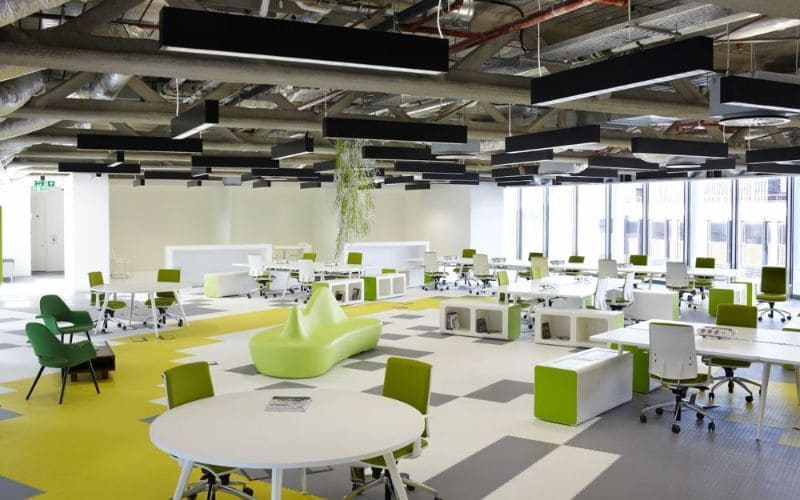
Open office space will be cleverly divided by plastic panels, half-wall partitions, glass partitions or green potted plants, shelves, etc. depending on usage needs or certain privacy.
This type of office is a harmonious combination of all design elements, including designing lighting for the office, space organization, and even the arrangement of furniture. The open space will help the company create a well-ventilated work environment, forming a unified entity. Additionally, it provides a comfortable and creative atmosphere for the staff.
>>>> SEE MORE: TOP 20+ beautiful, convenient, space-optimized small office designs
3.2. Ensure lighting
Khi thiết kế văn phòng làm việc thì việc đảm bảo tối đa nguồn ánh sáng là rất quan trọng. Vì chúng giúp làm không gian trở nên ấm áp, nhẹ nhàng, tạo cảm giác thoải mái cho toàn thể nhân viên trong văn phòng.
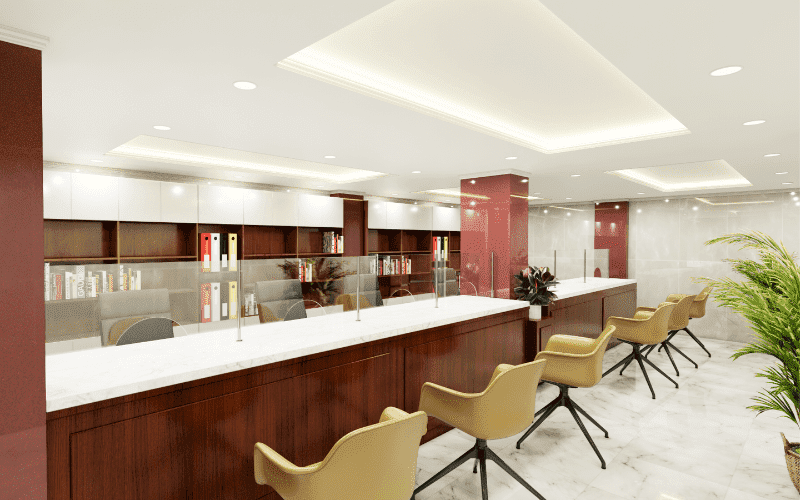
To maximize natural light, you can use glass or mirror doors, which not only save energy but also provide the necessary and sufficient light while working. Additionally, to adjust the lighting appropriately, you should add curtains in the window areas.
Additionally, the design of lighting for the office also utilizes recessed LED lights that are strategically placed to ensure optimal lighting, helping to save a significant amount on electricity costs. A well-organized lighting system will provide comfort for employees and enhance focus while working.
3.3. Functionality of furniture
In a smart office, modern furniture is optimized for functionality and operational efficiency. Smart office furniture integrates multiple features, serving various purposes. For example, a multifunctional smart office chair can also be converted into a bed for resting. When you need to sit, it can be folded back, making it very convenient and saving a lot of space.
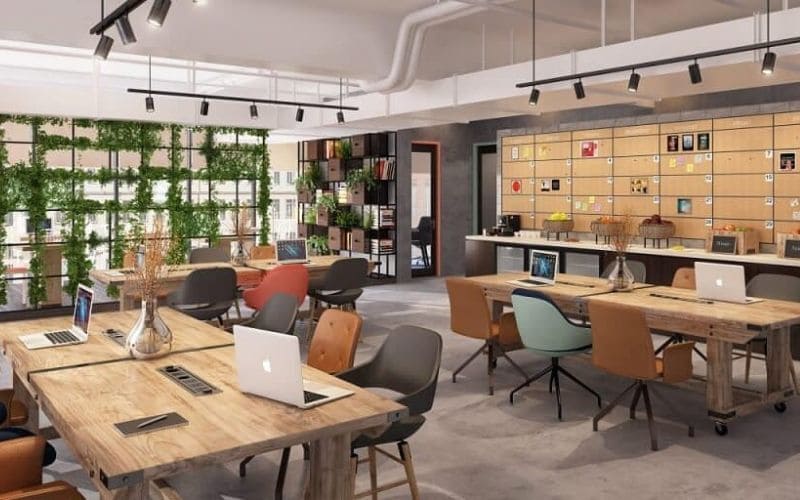
A smart piece of furniture with many integrated features will be more convenient for you to use, you will not spend too much time looking for other items. This makes the office much more flexible. In addition, multifunctional furniture is made from many different materials. They have eye-catching designs, creating a highlight for the office.
3.4. Aesthetics of design
Aesthetics is considered one of the indispensable factors when designing a room space. Aesthetics will depend on the color, interior decoration, layout, and decorative objects to create a beautiful harmony. These elements must not be separate and must be linked together. In addition, neatness is also a key component, contributing to the high aesthetics of your office.
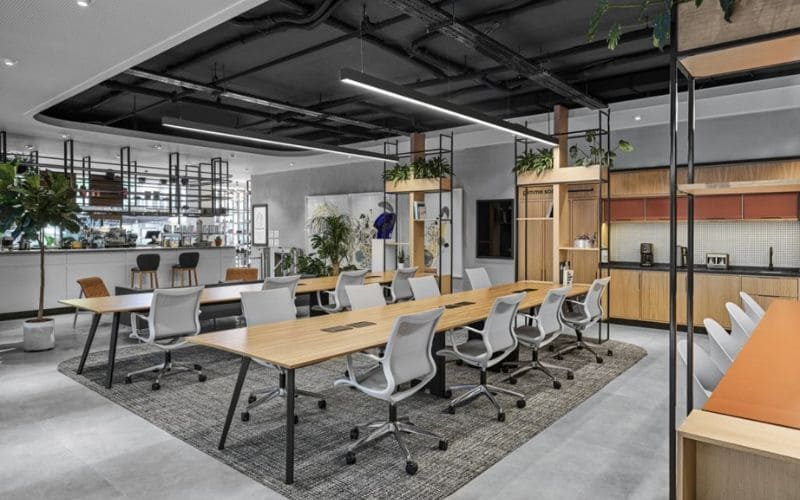
Having aesthetics in design will help your company gain credibility and be highly regarded in the eyes of partners and clients. Moreover, it also creates comfort for the people working in it. Therefore, in addition to the layout and decoration of furniture, office lighting design also plays a significant role in achieving the aesthetic quality of the workspace.
4. Criteria for calculating the correct office lighting
To have a beautiful and efficient office, the lighting system needs to be carefully considered to be placed at the right time and in the right location. Let’s take a look at the criteria below to help you calculate the most accurate lighting for your workspace.
4.1. Balance natural light
Maximizing natural light is an essential factor in lighting design for the office. This is because it plays an important role in providing and supplementing light sources and vitamins, helping employees feel relaxed, less stressed, and more at ease. As a result, their mood and work performance are significantly improved, while also helping to save on electricity costs.
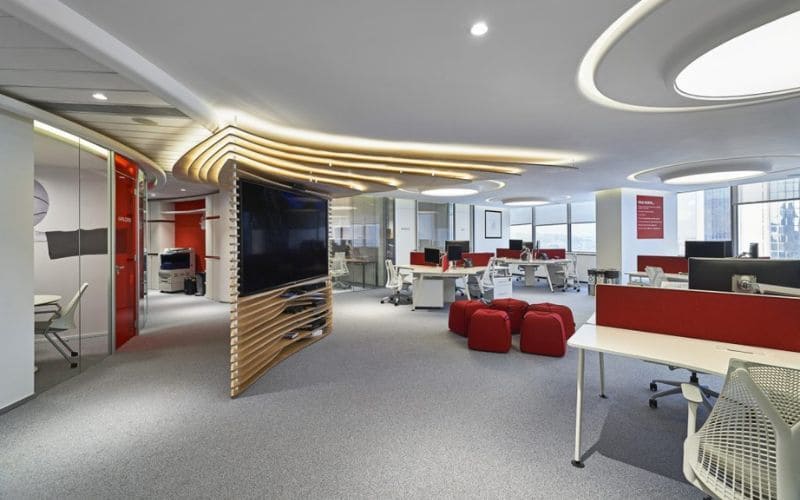
In addition, the combination of natural light and artificial light is necessary to meet the lighting system standards for the office. Accordingly, to ensure that the space is used the most and has enough light, in addition to designing the lighting system reasonably, the office should be designed in an open style, choosing glass windows. Along with that, the office can hang decorative curtains when there is a need to limit the light.
4.2. Use LED lights
Types of LED lights such as LED tube lights, LED panel lights, recessed LED lights, etc., are often the optimal choice for lighting design for offices. This is because the light emitted by these types of lights does not contain lead or mercury, ensuring safety for the health of all employees. Another special feature is that LED lights never cause eye strain, glare, or negatively affect the quality of work for everyone.
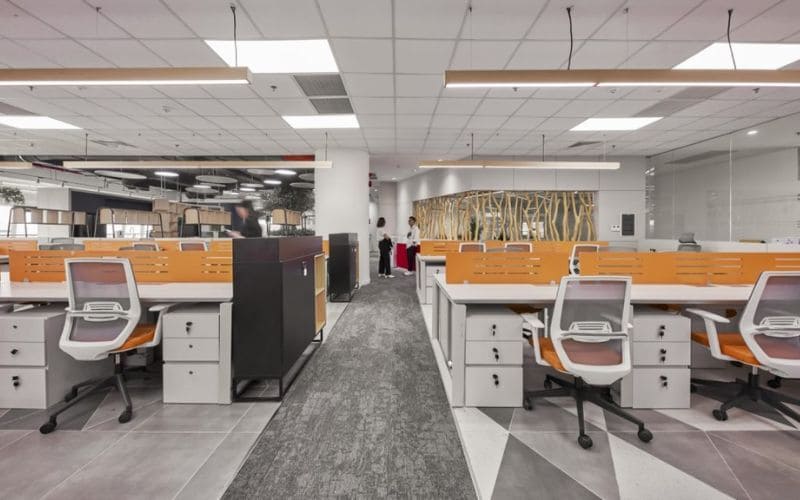
The color rendering index of LED lights from 80 Ra produces natural, realistic colors, ensuring good visibility. In addition, when using LED lights, businesses will not spend much time and money on repairs, upgrades and replacements. That is because their lifespan is extremely durable, up to more than 65,000 hours.
4.3. Color temperature
As presented in the content above, color temperature is a factor that tells you the color of the light bulb. LED lights usually have 3 color temperatures, corresponding to 3 light colors: white, yellow and neutral.
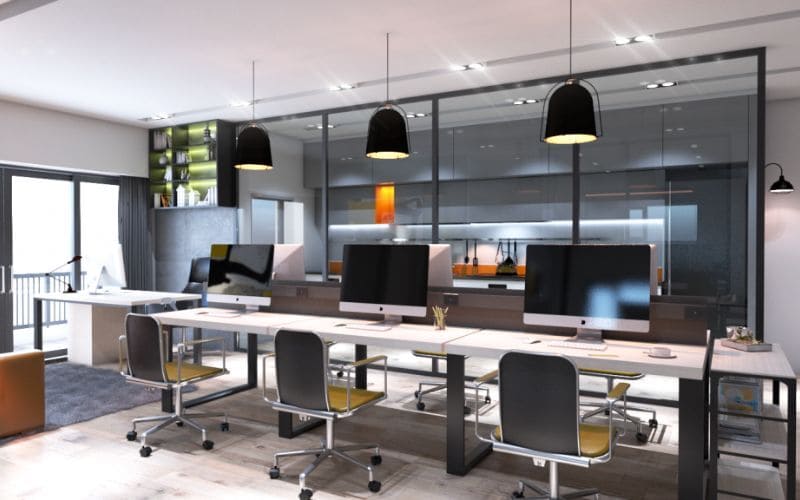
- The color temperature of white light ranges from 5500 to 6700K.
- Yellow light temperature is between 2700 – 3500K.
- The color temperature of yellow light ranges from 2700 to 3500K.
The color temperature of neutral light ranges from 4000 to 4500K.
To design a workspace that meets standards and ensures employees’ comfort, in addition to architecture and furniture, office lighting design should also be given top priority. The following content will introduce you to some solutions for creating a beautiful and modern office.
5.1. Number of bulbs
To calculate the number of light bulbs according to the standards when office lighting design, the designer must know the following parameters:
- Calculate the area of the room = length x width
- Total luminous flux required for design = total lux (standard illuminance) x room area
- Total luminous flux: luminous efficiency (luminous efficiency from 100 – 130 lm/w)
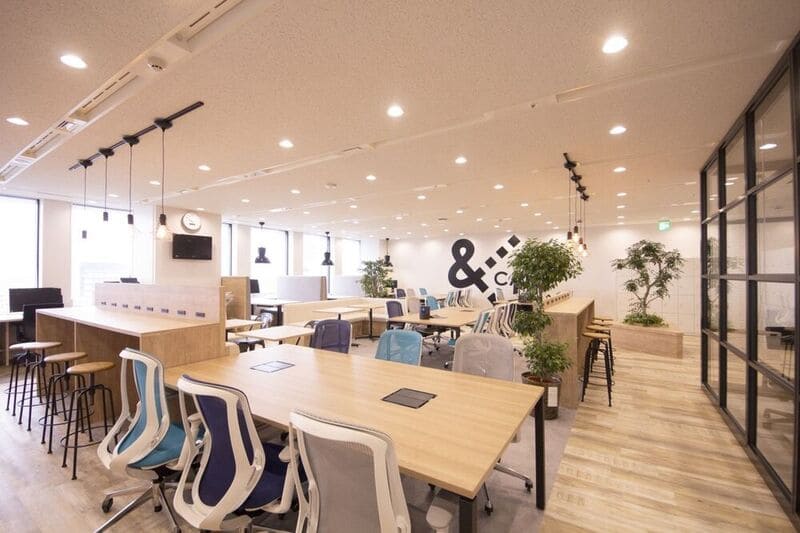
5.2. Lighting direction
The correct placement of lighting direction when office lighting design will clarify everything in the space. The person sitting at the workstation can also enhance visibility by adjusting the lighting direction. Lighting should not be overly directed because it could create harsh shadows, causing discomfort for the viewer.
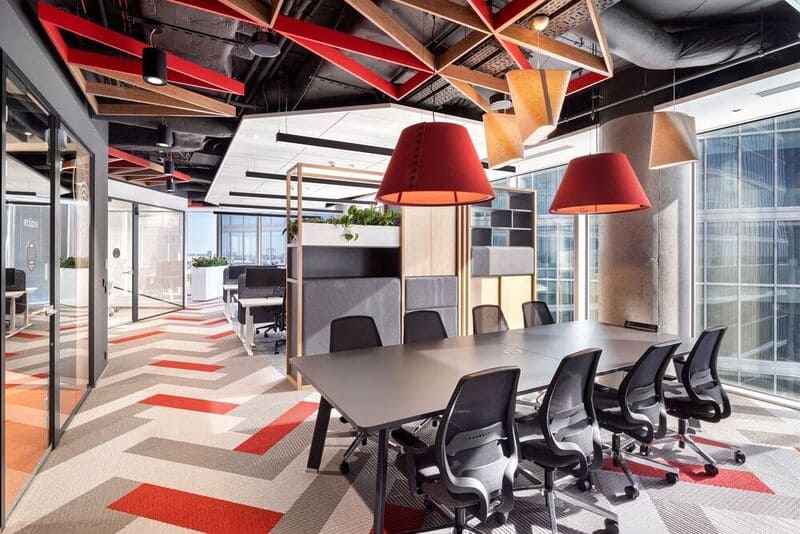
5.3. Illuminance
The illuminance and distribution of illuminance over the work area and adjacent areas will affect the productivity, safety and comfort of the person performing visual work. Typically, 400 lux is the standard illuminance for office work.
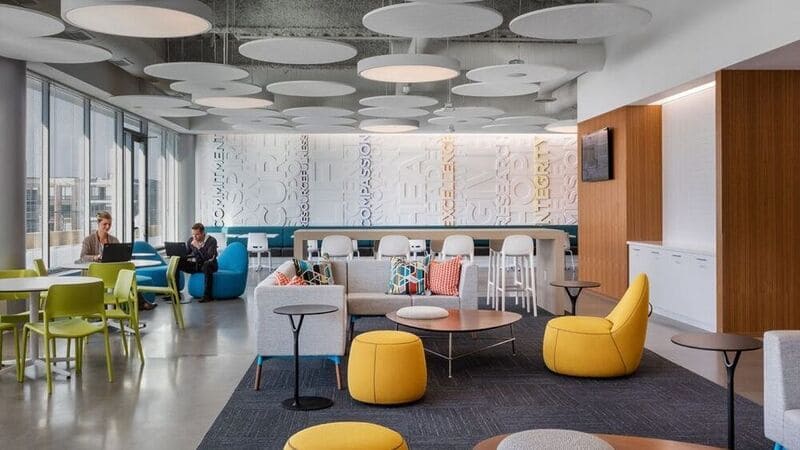
5.4. Energy saving light bulbs
Energy-efficient light bulbs are no longer unfamiliar to most Vietnamese businesses; they are always the most preferred type of light for office lighting design systems. The investment in lighting also needs to be carefully considered and suitable, ensuring a balance between labor productivity and the costs incurred in companies. Additionally, they help optimize electricity costs each month.
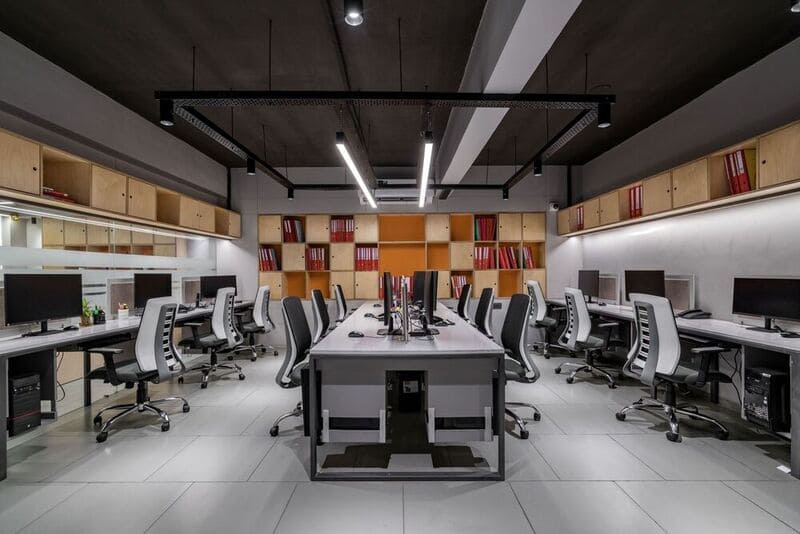
5.5. Lighting standards and quality
The lighting standards and required quality when designing office lighting are shown in the table below:
| Numerical order | Space function | Illuminance | Degreeeven | Color Rendering Index | PowerDensity | Glare FactorLimits |
| 1 | Office | 300 | 0,7 | 80 | ≤ 11 | 19 |
| 2 | Meeting room, reception | 300 | 0,7 | 80 | ≤ 11 | 19 |
| 3 | Lobby | 200 | — | 80 | ≤ 11 | 22 |
| 4 | Lobby | 100 | 0,5 | — | — | 28 |
| 5 | Sub-projects | 200 | — | — | — | 25 |
| 6 | Basement, parking | 75 | — | — | ≤ 3 | 25 |
6. General Calculation Formula for Office Lighting
The lighting system is an essential factor when building a lighting design for the office. Therefore, to meet the optimal lighting conditions for an office, you will need calculation formulas to create the best lighting system.
6.1. Calculate total light required
- Formula for calculating total light needed = Standard luminous flux * Room area (lumens)
- Note: Standard luminous flux must be taken from the lighting system standard table.
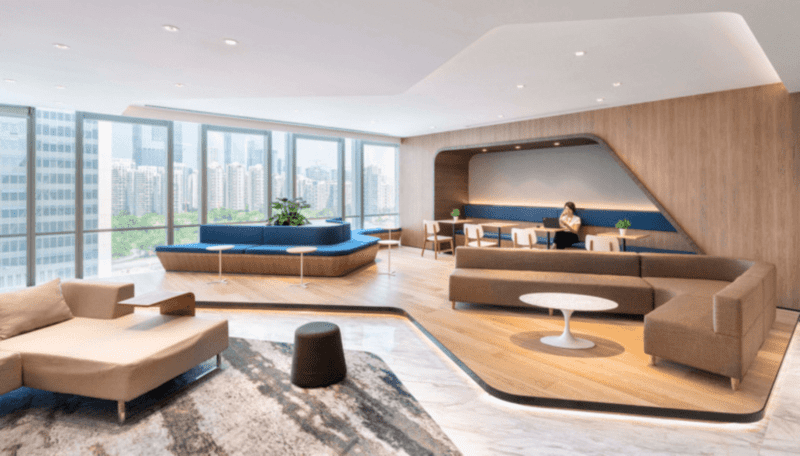
6.2. Calculate the number of light bulbs needed
- Calculate the number of light bulbs needed = Total power needed : Power/1 light bulb.
- Number of light bulbs needed for office = (Length/width of ceiling) / Distance between 2 lights
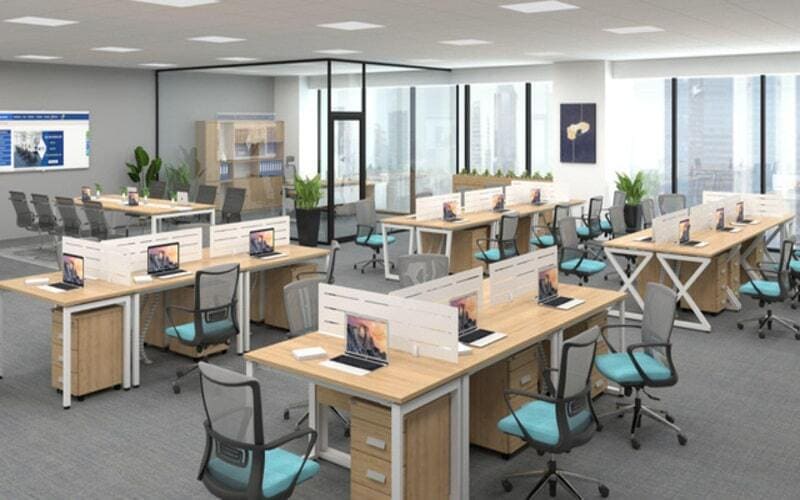
6.3. Calculate lamp power
- Power is a quantity representing the rate of electricity consumption of a lamp within 60 minutes.
- Formula for calculating total power for a lamp = Total light needed / Luminous efficiency of the lamp
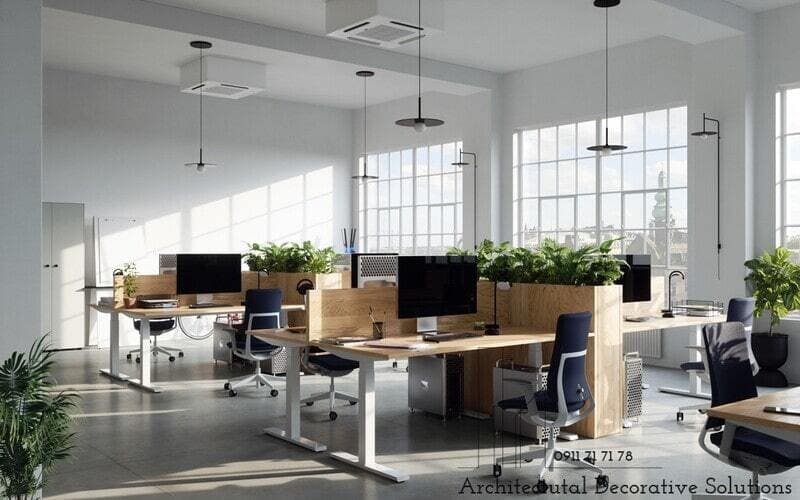
6.4. Example of calculating the number of light bulbs to illuminate 20m2
- Parameters to note:
- According to lighting standards, the office has a minimum illuminance of 400lux (400lm/1m2).
- Office area to be calculated: 20m2
- Total amount of light needed = 400×20 = 8000(lm)
- Total lamp power required = 8000/130 = 61.5 (w) (130 is the current luminous efficiency of LED lamps
- So, the number of lights needed for a 20m2 office = total power/power of 1 bulb. If the bulb has a power of 12w, the number of bulbs needed for this office = 61.5/12= 5.1 (bulbs)
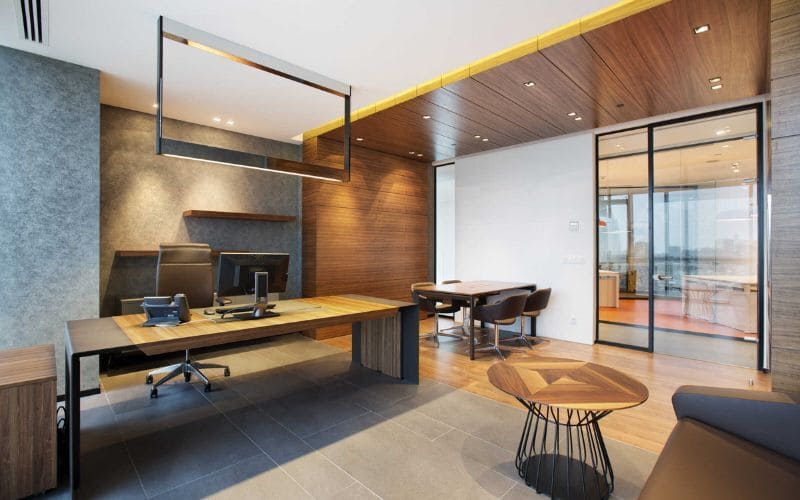
So, with an office area of 20m2, each bulb capacity is 12w, 5 bulbs will need to be used to ensure effective lighting. With different capacities, you do the same, with the ultimate goal of finding the number of bulbs needed.
Above are useful and detailed information about lighting design for the office. Hope you have chosen the most suitable idea for yourself. Please visit our Timi Office website to update more useful information.
>>>> RELATED ARTICLES:
- 12 principles of office design that need to be understood clearly – Timi Office
- 35 beautiful and modern 200m2 office design layouts

